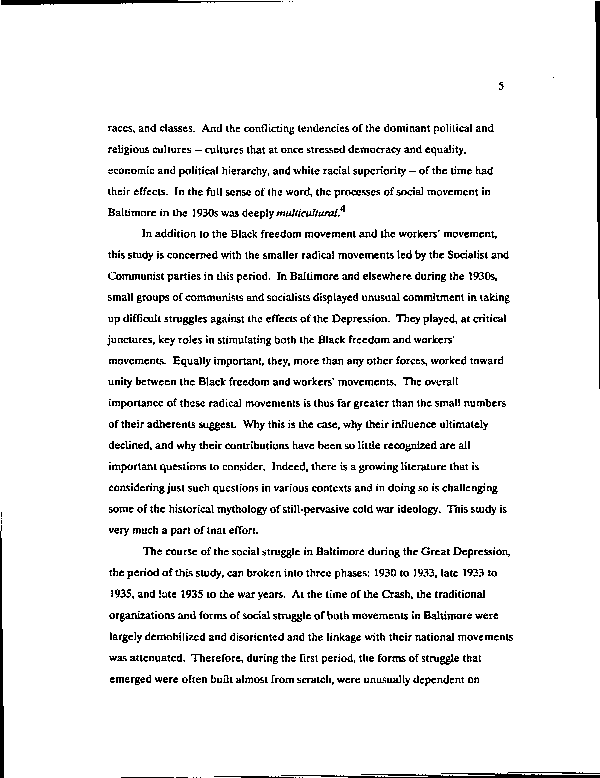|
races, and classes. And the conflicting tendencies of the dominant political and
religious cultures — cultures that at once stressed democracy and equality,
economic and political hierarchy, and white racial superiority — of the time had
their effects. In the full sense of the word, the processes of social movement in
Baltimore in the 1930s was deeply multicultural*
In addition to the Black freedom movement and the workers' movement,
this study is concerned with the smaller radical movements led by the Socialist and
Communist parties in this period. In Baltimore and elsewhere during the 1930s,
small groups of communists and socialists displayed unusual commitment in taking
up difficult struggles against the effects of the Depression. They played, at critical
junctures, key roles in stimulating both the Black freedom and workers'
movements. Equally important, they, more than any other forces, worked toward
unity between the Black freedom and workers' movements. The overall
importance of these radical movements is thus far greater than the small numbers
of their adherents suggest. Why this is the case, why their influence ultimately
declined, and why their contributions have been so little recognized are all
important questions to consider. Indeed, there is a growing literature that is
considering just such questions in various contexts and in doing so is challenging
some of the historical mythology of still-pervasive cold war ideology. This study is
very much a part of that effort.
The course of the social struggle in Baltimore during the Great Depression,
the period of this study, can broken into three phases: 1930 to 1933, late 1933 to
1935, and late 1935 to the war years. At the time of the Crash, the traditional
organizations and forms of social struggle of both movements in Baltimore were
largely demobilized and disoriented and the linkage with their national movements
was attenuated. Therefore, during the first period, the forms of struggle that
emerged were often built almost from scratch, were unusually dependent on
|

